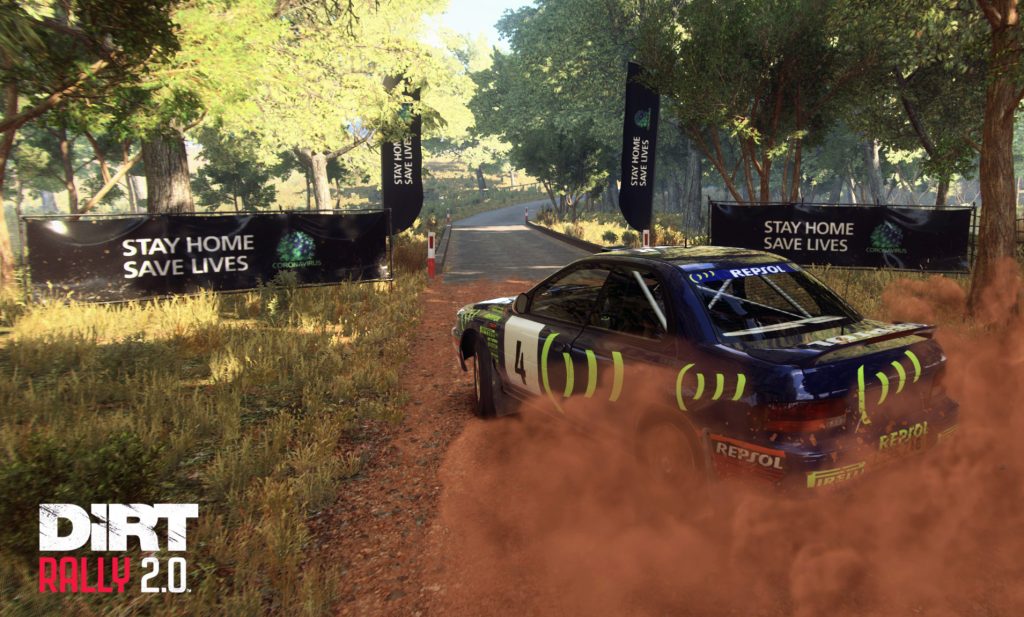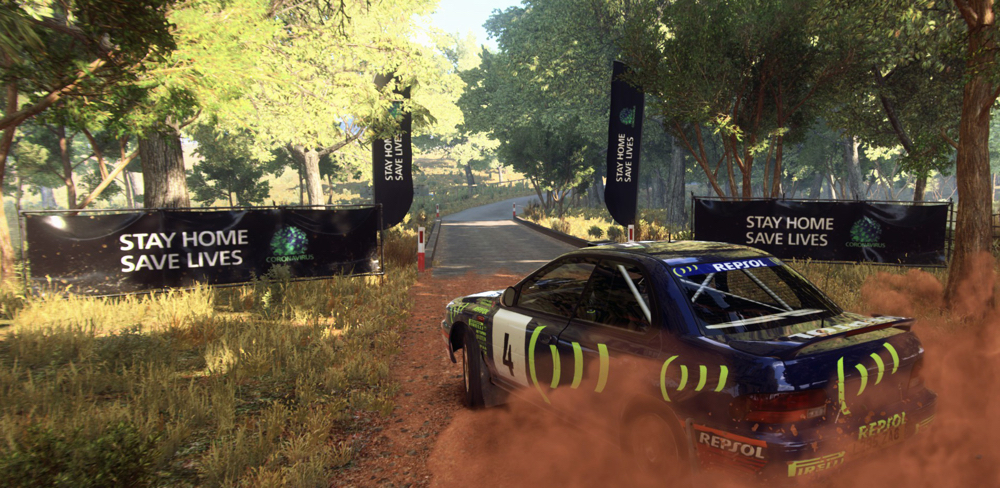‘Stay home, save lives’ goes the government’s current advertising campaign, designed to protect the NHS from the strain put on it by COVID-19.
The campaign has been delivered through all of the usual channels; television, print, radio and out of home (OOH). But there’s a new channel that most of us have probably never even considered.
It’s part of an industry valued at a whopping $150bn worldwide. It’s bigger than the film, video-on-demand and music industries combined and one-third of the world’s population spend on-average 7-hours a week engaging with it.
It’s the video games industry and despite having the (perhaps unfair) reputation for consisting of teens in their bedrooms, there could be more to this untapped advertising space.
Staying home, playing games and saving lives

Dirt Rally 2.0 is a racing game that was released by Codemasters early in 2019 but crucially it has been included in Microsoft’s Xbox Game Pass since last September and this month it’s also a part of Sony’s PlayStation Plus Membership. For the uninitiated, this means that the game is available for free download for members of either service – a sort of Netflix-for-games if you like.
That with the fact that a significant portion of the world’s population is confined to its home and the game is open to an even wider audience than when it was first released, all looking for a way to while away the hours.
So it’s with interest that would-be advertisers should look at the government’s decision to include its ‘stay home, save lives’ advertising message within the racing game.
Gaming and esports
To non-gamers, this type of thing would never be seen, but is it worth taking note? The first reason that the answer is probably ‘yes’ is that gaming comes in two flavours: gaming (as in playing the game) and esports, which is the fast-growing world of competitive gaming.
Both are interesting areas. For instance, in 2018 over 200m people watched gaming videos on YouTube. Meanwhile, since the COVID-19 pandemic began to unfold, Twitch, a live-streaming platform for gamers racked up an incredible 2bn streamed hours, attracted more than 5m gamers and generated 230,000 years of footage (yes, ‘years’ is not a typo).
Esports is gaming-gone-professional and according to research carried out by Green Man Gaming, the industry exceeded $1bn in revenue last year whilst entertaining an audience of 443m.
So the statistics are pretty clear; the size of the audience that can be reached via gaming and esports is immense. In addition to that, to target the gaming and esports industry isn’t just to target those playing the games, but also the huge audience that’s engaged in watching the games unfold.
What does the audience look like?
The crucial information for any would-be advertiser, of course, is ‘who is the audience?’ You can reach as many people with your messaging as you like, but if they are the wrong people it will be falling on deaf ears.
According to Activate Inc, about two-thirds of US esports viewers are aged 18-35 whilst according to Nielsen, roughly the same proportion of the audience is comfortable with the idea of brand involvement in esports.
Data from Newzoo, a research firm also suggests UK numbers are similar, for instance, in a 2016 report the firm found that 69% of the audience was aged between 21-35.
The brand opportunities
Companies like Bidstack enable brands to reach gamers with native ads in games, as per the Dirt Rally 2.0 example used by the government. They also offer advertisers the ability to advertise on pitch-side boards at the side of virtual football games in Football Manager. Anecdotal evidence suggests gamers like the added realism that the presence of brands creates.
In esports, advertisers can sponsor leagues, coverage, teams and the players themselves.
So, are there any good examples of brands making use of esports to promote themselves? Yes, take Team Liquid for instance. Team Liquid, founded in 2000, is billed as a ‘professional gaming organisation’ and counts basketball superstar, Michael Jordan as one of its investors.
Team Liquid has a raft of sponsors including Honda and SAP no-less. It’s the latter that is perhaps of most interest to the financial services market; the very fact that a software firm best known for its ERP (enterprise resource planning) software sees fit to advertise in this fast-growing space speaks volumes.
The final question then is this; ‘should a financial services brand be looking to gaming and esports to reach its audience?’ The answer will take some work to reach, but the early signs look very promising. The rise of gaming and particularly the increasing interest in esports is taking off, perhaps it’s time to get on the elevator whilst it’s still close to the ground floor?











